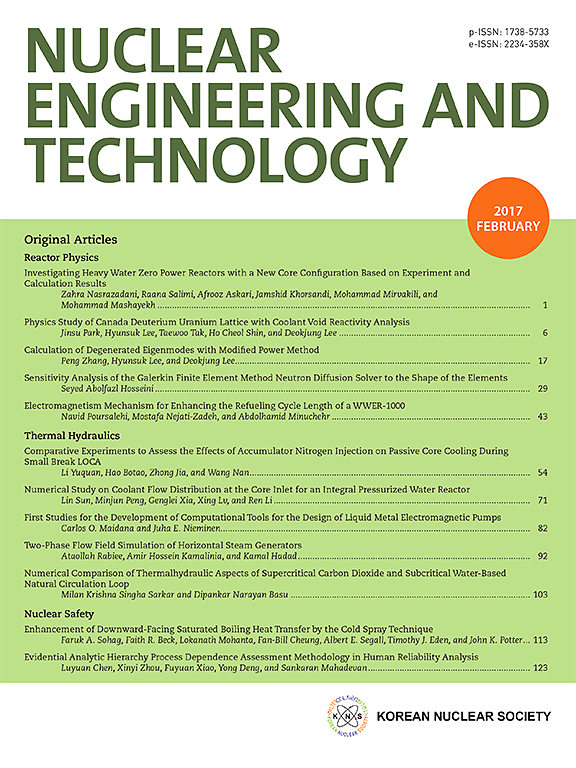Microstructure characteristic and corrosion resistance of pressure resistance seal welded joint of clad tubes
IF 2.6
3区 工程技术
Q1 NUCLEAR SCIENCE & TECHNOLOGY
引用次数: 0
Abstract
The zirconium alloy clad tube provides a protection and room for the nuclear reaction of fuel rods in the nuclear power plant. The clad tubes are usually sealed up by pressure resistance welding with the end plugs. The non-equilibrium physical metallurgy, caused by welding, often brings about a non-uniformity of microstructure and corrosion resistance in the zirconium alloy joint. In order to investigate the influence of the microstructure on the service performance of the welded joint corrosion experiments were designed and conducted by amplifying the mechanical and heat-affected zone in the joint, using a thermal and mechanical simulation machine. It was shown that the amplified sample had the similar microstructure and micro hardness with the mechanical and heat-affected zone. The corrosion rate of the mechanical and heat-affected zone was higher than that of the base metal of the clad tube. A heat treatment after welding was proposed to weaken the influence of microstructure difference on its corrosive resistance. It was shown that the corrosive resistance could be improved by modifying the microstructure appearance and the distribution of the second phase particles.
求助全文
约1分钟内获得全文
求助全文
来源期刊

Nuclear Engineering and Technology
工程技术-核科学技术
CiteScore
4.80
自引率
7.40%
发文量
431
审稿时长
3.5 months
期刊介绍:
Nuclear Engineering and Technology (NET), an international journal of the Korean Nuclear Society (KNS), publishes peer-reviewed papers on original research, ideas and developments in all areas of the field of nuclear science and technology. NET bimonthly publishes original articles, reviews, and technical notes. The journal is listed in the Science Citation Index Expanded (SCIE) of Thomson Reuters.
NET covers all fields for peaceful utilization of nuclear energy and radiation as follows:
1) Reactor Physics
2) Thermal Hydraulics
3) Nuclear Safety
4) Nuclear I&C
5) Nuclear Physics, Fusion, and Laser Technology
6) Nuclear Fuel Cycle and Radioactive Waste Management
7) Nuclear Fuel and Reactor Materials
8) Radiation Application
9) Radiation Protection
10) Nuclear Structural Analysis and Plant Management & Maintenance
11) Nuclear Policy, Economics, and Human Resource Development
 求助内容:
求助内容: 应助结果提醒方式:
应助结果提醒方式:


